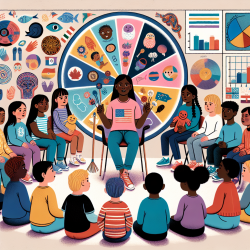Understanding Media's Role in Youth Suicide Prevention
The portrayal of sensitive issues such as suicide in media has long been a subject of scrutiny and research. The popular Netflix series '13 Reasons Why' brought this issue to the forefront, prompting discussions on how media coverage can influence societal attitudes towards suicide, especially among youth. A recent study titled Suicide portrayal in the Canadian media: examining newspaper coverage of the popular Netflix series ‘13 Reasons Why’ provides valuable insights into how Canadian newspapers covered the series and adhered to best practices in reporting on suicide.
Key Findings from the Research
The study analyzed 71 articles from leading Canadian newspapers published within three months of the series' release. The findings revealed that most articles adhered to core recommendations for reporting suicide, such as avoiding the description of suicide methods and refraining from using stigmatizing language like "commit suicide." This adherence is crucial as it helps prevent the phenomenon known as suicide contagion, where media portrayal of suicide can lead to an increase in similar behaviors.
Moreover, nearly half of the articles linked suicide to broader social issues or quoted mental health professionals, thus providing a more comprehensive understanding of the factors contributing to youth suicide. However, only 25% of the articles included information on where individuals considering suicide could seek help, highlighting an area for improvement.
Implications for Practitioners
For practitioners working with youth, these findings underscore the importance of understanding media's dual role in suicide prevention. While media can be a powerful tool for raising awareness and promoting dialogue, it can also inadvertently contribute to harmful outcomes if not handled sensitively. Practitioners should be aware of the media's influence and use it to engage with youth in meaningful conversations about mental health and suicide prevention.
- Encourage open discussions: Use media portrayals as a starting point for discussions about mental health and suicide, emphasizing the importance of seeking help and supporting one another.
- Educate about media literacy: Teach youth to critically analyze media content and recognize sensationalized or misleading portrayals of suicide.
- Promote responsible media consumption: Guide youth towards media that adheres to best practices in reporting sensitive issues.
Encouraging Further Research
While the study provides valuable insights, it also highlights the need for further research into media's impact on youth mental health. Future studies could explore the portrayal of suicide on social media platforms and its effects on young audiences. Additionally, examining media coverage in other regions and languages could provide a more comprehensive understanding of global trends in suicide reporting.
For practitioners, staying informed about ongoing research and developments in media reporting practices is essential. By doing so, they can better support youth and advocate for responsible media portrayals of mental health issues.
To read the original research paper, please follow this link: Suicide portrayal in the Canadian media: examining newspaper coverage of the popular Netflix series ‘13 Reasons Why’.










